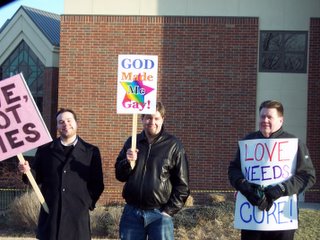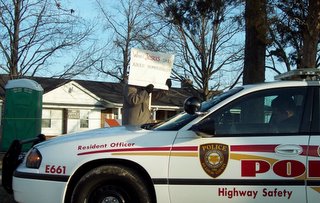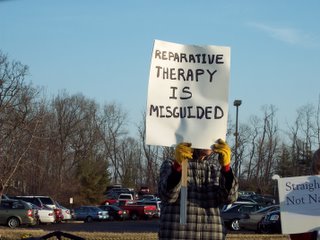Among the following brief vignettes, choose the person you think identifies as heterosexual. If you are of the reparative school, you can guess who you think is a “heterosexual with a homosexual problem.” Or you can say who you think might experience same-sex attraction, whatever the person’s label. Guess by leaving a comment. Assume no child abuse, mental illness, or substance abuse unless specified.
James cannot remember ever hearing his father saying “I love you.†His mother had three children by three different fathers, James being the oldest brother of two younger sisters. James’s father traveled frequently on business and did not attend any of James school activities. James’ mother was an unhappy woman who frequently criticized James and the men who were fathers of her children. James became his mother’s main source of emotional support through high school. He did not excel in school but rather worked many jobs to help for his sisters and mother. James had a hard time breaking away from home and lives now just a few miles from his mother.
Dallas was the oldest of two boys growing up in an urban area. His father was a mechanic who came home every day from the shop in time to have supper with his family. The family attended church regularly and was active in the local sports programs. Dallas enjoyed sports but was a better student than an athlete, earning entrance into a selective private college. His parents never divorced but they did not seem emotionally or physically close. Dallas still has notes from his father telling him how much Dallas is loved. Dallas has expressed a desire to enter the pastorate.
John is a pastor’s son, the youngest of two boys and an older sister. John moved a lot with his family due to frequent pastoral changes. John was a good student and athlete. He played linebacker for the high school football team and was popular in school. He calls his dad “my hero†because he is so bold in defense of his faith. Furthermore his dad was his chosen accountability partner as he entered college. John’s mother is a real estate agent part-time and busy pastor’s wife. John remembered fighting a lot with his older sister because she was rebellious in high school. John’s brother is more bookish but John describes him as a good friend.
Gareth was the youngest of four boys. As a child he felt different from others, both in his childhood play and his interests. A shy, studious and unathletic boy, he was teased quite a bit by his male peers and lived a fairly isolated childhood. Gareth’s brothers were much older, not kind and so did not play or interact with him. His father traveled frequently as a physician and businessman. Gareth’s mother was very strict religiously and did not allow card playing, dancing or the wearing of bright colors.





